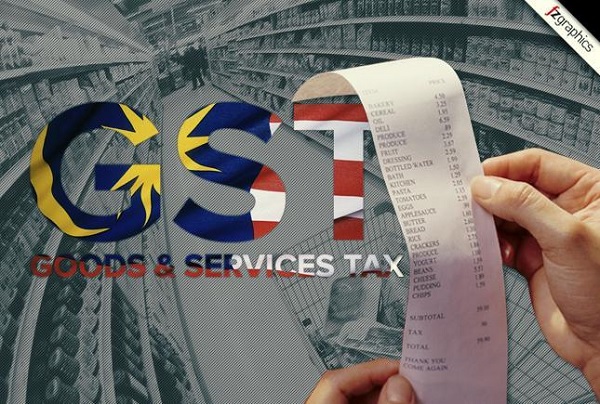
by admin | May 25, 2021 | Economy, Markets, News, Politics
 New Delhi : Implementation of GST and subsequent slowdown in the manufacturing sector is expected to drag down India’s growth to 6.5 per cent in 2017-18, official data showed on Friday.
New Delhi : Implementation of GST and subsequent slowdown in the manufacturing sector is expected to drag down India’s growth to 6.5 per cent in 2017-18, official data showed on Friday.
India’s projected economic growth rate for 2017-18 will be lower than the 7.1 per cent achieved in 2016-17.
According to Chief Statistician T.C.A. Anant, the de-stocking disruption caused due to the GST implementation has impacted the full-year Gross Domestic Product (GDP) estimates.
The estimate of national income for 2017-18 released by the Central Statistics Office (CSO), the GDP at constant (2011-12) prices for 2017-18 is likely to attain a level of Rs 129.85 lakh crore.
“The growth in GDP during 2017-18 is estimated at 6.5 per cent as compared to the growth rate of 7.1 per cent in 2016-17,” the Ministry of Statistics & Programme Implementation said in its estimate of National Income for 2017-18.
Earlier, the country’s GDP growth for the second quarter of the current fiscal ended September 30 was 6.3 per cent — up from 5.7 per cent reported during the first quarter of 2017-18.
The CSO has primarily used seven-month data to extrapolate for the full fiscal.
As per the data, the Gross Value Added (GVA) at basic constant prices (2011-12) is anticipated to increase from Rs 111.85 lakh crore in 2016-17 to Rs 118.71 lakh crore in 2017-18.
“Anticipated growth of real GVA at basic prices in 2017-18 is 6.1 per cent as against 6.6 per cent in 2016-17.”
The data disclosed that sectors like ‘public administration, defence and other services’, ‘Trade, hotels, transport, communication and services related to broadcasting’, ‘electricity, gas, water supply and other utility services’ and ‘financial, real estate and professional services’ registered a growth rate of over 7 per cent.
On the other hand, growth in the ‘agriculture, forestry and fishing’, ‘mining and quarrying’, ‘manufacturing’ and ‘construction’ sectors “is estimated to be 2.1 per cent (from 4.9 per cent), 2.9 per cent (from 1.8 per cent), 4.6 per cent (from 7.9 per cent) and 3.6 per cent (from 1.7 per cent)”, respectively.
—IANS
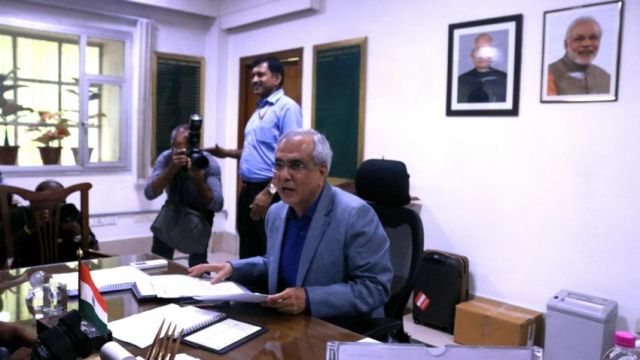
by admin | May 25, 2021 | Economy, News, Politics

Rajiv Kumar
New Delhi : Unfazed by the official data on Friday showing that the Indian economy will grow at a slower pace compared to the last fiscal, NITI Aayog Vice Chairman Rajiv Kumar has said the GDP growth will become more robust in 2018-19.
Kumar’s remarks came after Chief Statistician T.C.A. Anant announced that Indian economy was expected to grow at a slower 6.5 per cent in 2017-18 compared to the 7.1 per cent in 2016-17.
Reacting on the growth estimates, Kumar said the GDP growth in the second half of 2017-18 had risen to seven per cent bringing the annual growth rate to 6.5 per cent.
According to a statement issued by the NITI Aayog, Kumar pointed out that economic activity had been picking up over the last three quarters and can be expected to strengthen in the coming period “with the manufacturing Purchasing Managers’ Index (PMI) now reading at a five-year high of 54 per cent, and FMCG demand picking up briskly”.
“Hence the GDP growth will become more robust in 2018-19.”
He added that the estimates assume significance in the wake of the fact that the higher second half growth had come despite a weaning of public sector expenditures which had peaked in 2016-17 on account of the implementation of the Seventh Pay Commission recommendations.
—IANS
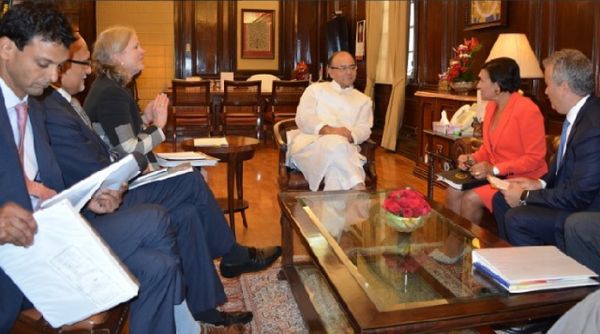
by admin | May 25, 2021 | Opinions
 By V. Srinivas,
By V. Srinivas,
The 15th Finance Commission, which the government notified on November 27, 2017, will have to first contend with the slowdown in the Indian economy.
There is an upward trend in the fiscal deficits of states. The inter-governmental transfer system has become overly complex with different sharing arrangements for different taxes; the spending autonomy of the states, combined with their ability to borrow, has obstructed efforts at consolidating public finances; there is little incentive for states to improve revenue performances and revenue-sharing arrangements have led to pro-cyclical policies at the state level.
The high levels of inter-governmental transfers necessitate that states ensure that provincial tax enforcement and structural reforms are strengthened. The problem with persistent off-budget spending has proved a drag on the fiscal deficits of the states.
The vertical balances to the states relative to the Centre’s gross revenue receipts have shown trend increases in every Finance Commission and it would not be possible to reduce the devolution without a corresponding increase in fiscal and revenue deficits of the states. The higher devolution under the 14th Finance Commission have seen marginal increases in social sector allocations. There are pressures to increase allocations to the centrally sponsored schemes (CSS) for higher expenditure on health and education.
The tax buoyancies have been affected by the transition to the goods and services tax (GST) and the GST compensation to states will continue till 2022.
For the 15th Finance Commission, GST will usher in higher tax buoyancy by bringing in a large number of new tax payers into the net. Higher tax collections under GST will provide the Union government room for fiscal manoeuvre to finance the inter-governmental transfer system.
On the horizontal balances, the 15th Finance Commission has the responsibility of equalising the widening gap between richer states and the low-income states. These inequalities have resulted in widely differing social and capital expenditure between the states. A large part of the equalisation effort by the 15th Finance Commission would have to be through grants-in-aid rather than devolution.
The 14th Finance Commission’s recommendations ushered in a new era of fiscal federalism in India. Devolution to the states significantly went up from 32 per cent to 42 per cent. While most countries have found it difficult to finance federal transfers of about 30 per cent to the provinces, India has taken it to 42 per cent.
The government followed up the historic devolution with the constitution of the NITI Aayog to promote cooperative federalism and enacted a constitutional amendment to establish the GST Council.
These major progressive steps were backed by restructuring the CSS allocation ratio from 75:25 to 50:50 to provide greater flexibility and ownership to the states. In turn, the states were mandated to pursue the objectives of zero revenue deficit, fiscal deficit not exceeding 3 per cent of GSDP, interest payments-to-revenue receipt ratio not exceeding 10 per cent and debt-to-GSDP ratio not exceeding 25 per cent.
Despite these historic steps, there remain challenges. The resource requirements of the power sector remain very high. In some states, the fiscal deficit with power sector allocations have climbed to around 9 per cent. The deteriorating public debt dynamics caused by the requirements of the power sector’s restructuring would be a major area of concern for the 15th Finance Commission. An alternate fiscal scenario would need to be considered to limit the on-budget fiscal deficits to 3 per cent by including the power sector.
Then, a debt-to-GSDP ratio of 25 per cent greatly limits the government’s borrowing needs and has the potential to curtail social sector expenditure. The NITI Aayog has pointed out that social sector expenditure has increased only marginally since the 14th Finance Commission despite an increase in total central transfers to the states by 21.9 per cent.
The 14th Finance Commission assessed state finances as (a) for states with above-average tax-GSDP ratio the assumed tax buoyancy was 1.05, implying a moderate increase and (b) for other states, a higher buoyancy of 1.5 was assumed. An increase in aggregate tax-GSDP ratio from 8.26 of GSDP to 9 per cent in the terminal year was assumed.
On the expenditure side, the 14th Finance Commission included the expenditure incurred on CSS in revenue expenditure. The expenditure was projected as 11.12 per cent of GDP against 13.57 per cent projected by the states.
In sum, the 15th Finance Commission will review the current status of the finance, deficit, debt levels, cash balances and fiscal discipline efforts of the Union and the states and recommend a fiscal consolidation roadmap for sound fiscal management, taking into account the responsibilities of the central and state governments. The Commission may also examine whether revenue deficit grants be provided at all.
The best way forward would be to adhere to the letter and spirit of the constitution by balancing the Union and state’s revenue powers with expenditure responsibilities listed in the 7th schedule of the constitution, appreciate the problems raised by stakeholders, and attempt to address the contemporary issues relevant to the terms of reference.
(V.Srinivas, an IAS officer, is chairman Rajasthan Tax Board and holds additional charge of Chairman Rajasthan’s Board of Revenue. The views expressed are personal. He can be contacted at vsrinivas@nic.in)
—IANS
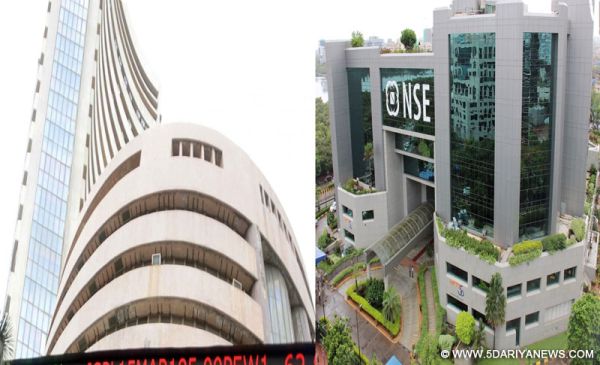
by admin | May 25, 2021 | Economy, Markets, News
 Mumbai : Profit booking along with low volumes and higher crude oil prices depressed key indices of the Indian equity market on Monday — the first trading day of 2018.
Mumbai : Profit booking along with low volumes and higher crude oil prices depressed key indices of the Indian equity market on Monday — the first trading day of 2018.
According to market analysts, heavy selling pressure was witnessed in banking, auto, metals, oil and gas and IT stocks.
The 30-scrip S&P BSE Sensex, which had previously closed at 34,056.83 points, ended the day’s trade at 33,812.75 points, down 244.08 or 0.72 per cent.
Similarly, the National Stock Exchange’s (NSE) Nifty50 closed in the red at 10,435.55 points, down by 95.15 points or 0.90 per cent.
“Markets corrected sharply on Monday as selling pressure intensified in the last 45 minutes of trade,” Dhruv Desai, Director and Chief Operating Officer of Tradebulls, told IANS.
“The indices traded in a narrow range in the initial part of the session due to lack of any major domestic and global cues and as most other Asian markets were shut due to New Year holiday.”
Vinod Nair, Head of Research, Geojit Financial Services said: “Despite positive Auto sales numbers, market started-off the New Year on a cautious note. Lingering concern on fiscal slippages and a sharp up-move in crude prices dampened investor sentiments.”
On the currency front, the Indian rupee strengthened by 19 paise to close at 63.68 against the US dollar from its previous close at 63.87.
Provisional data with the exchanges showed that foreign institutional investors purchased scrips worth Rs 325.91 crore while domestic institutional investors sold stocks worth Rs 1,300.31 crore.
Sectorwise, the S&P BSE banking index fell by 217.60 points, automobile index by 208.56 points and metal index by 77.89 points.
On the other hand, S&P BSE capital goods index rose by 76.47 points, followed by consumer durables index by 41.33 points and power index by 18.72 points.
Major Sensex gainers on Monday were: Wipro, up 1.39 per cent at Rs 317.75; Coal India, up 1.31 per cent at Rs 266.45; Sun Pharma, up 0.49 per cent at Rs 573.60; Axis Bank, up 0.44 per cent at Rs 564.85; and Larsen and Toubro (L&T), up 0.39 per cent at Rs 1,261.80.
Major Sensex losers were: Tata Consultancy Services (TCS), down 1.69 per cent at Rs 2,654.65; Hindustan Unilever, down 1.52 per cent at Rs 1,347.25; IndusInd Bank, down 1.45 per cent at Rs 1,626.25; HDFC, down 1.35 per cent at Rs 1,687.35; and Tata Motors, down 1.35 per cent at Rs 425.40.
—IANS
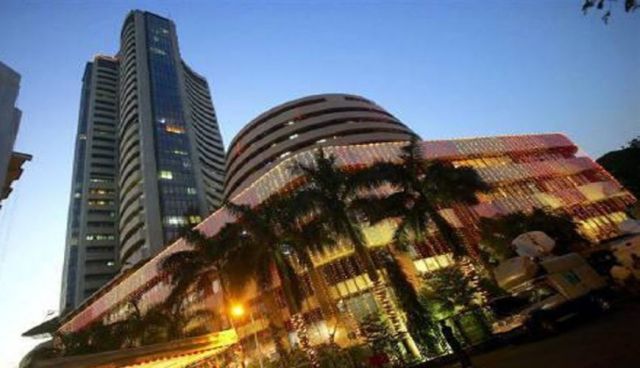
by admin | May 25, 2021 | Economy, Markets, News
 By Rohit Vaid,
By Rohit Vaid,
Mumbai : Macro-economic data points coupled with the direction of foreign fund flows and fears of higher inflationary pressure are expected to influence the Indian equity markets during the upcoming week.
According to market observers, triggers such as the global geo-political situation and crude oil price movement can unleash volatility.
“The markets next week would start with the PMI (Purchasing Managers’ Index) data for advance clues on where the manufacturing and services economy is going,” Devendra Nevgi, Founder and Principal Partner, Delta Global Partners, told IANS.
“As global investors mostly return to work late in the next week, the fresh year’s allocations would be critical. Markets would also look for support from domestic investors continuing in the new calendar year. Crude oil prices have already breached $66.5 per barrel, this combined with higher inflationary expectations may dampen the sentiment.”
Key macro-economic data points like the monthly automobile sales’ numbers, eight core industries’ (ECI) output, PMI manufacturing and services’ figures will be released during the week staring January 1, 2018.
According to D.K. Aggarwal, Chairman and Managing Director of SMC Investments and Advisors: “Macroeconomic data, trend in global markets, investment by foreign and domestic investors, the movement of rupee against the dollar and crude oil price movement will dictate trends on the bourses in the first week of the new year.”
Analysts opined that the direction of foreign fund flows and near-term trends in the rupee’s movement against the US dollar will also affect market sentiments.
Provisional figures from the stock exchanges showed that foreign institutional investors (FIIs) bought stocks worth Rs 1,676.07 crore, while domestic institutional investors (DIIs) purchased scrip worth Rs 25 crore during last week.
On the currency front, the rupee is expected to trade in the range of 63.60-64.10 to a US dollar. Last week, it had strengthened by 18 paise to closed at 63.87 to a greenback.
“The Indian rupee is expected to remain firm due to a weak dollar and healthy inflows into the Indian debt and equity markets. The immediate short-term range is expected to be between 63.60-64.10,” Anindya Banerjee, Deputy Vice President for Currency and Interest Rates with Kotak Securities, told IANS.
On technical levels, the underlying trend of the National Stock Exchange’s (NSE) Nifty remains bullish.
“Nifty is expected to trade between 10,400-10,650 levels while bank nifty is expected to trade between 25,300-25,850 levels,” Aggarwal predicted.
Last week, the key Indian equity indices — the BSE Sensex and the NSE Nifty50 — rose for the fourth consecutive week.
Consequently, the 30-scrip Sensitive Index (Sensex) of the Bombay Stock Exchange closed higher by 116.53 points or 0.34 per cent to 34,056.83 points.
Similarly, the Nifty50 of the NSE rose by 37.7 points or 0.35 per cent to 10,530.70 points.
(Rohit Vaid can be contacted at rohit.v@ians.in)
—IANS

 New Delhi : Implementation of GST and subsequent slowdown in the manufacturing sector is expected to drag down India’s growth to 6.5 per cent in 2017-18, official data showed on Friday.
New Delhi : Implementation of GST and subsequent slowdown in the manufacturing sector is expected to drag down India’s growth to 6.5 per cent in 2017-18, official data showed on Friday.



